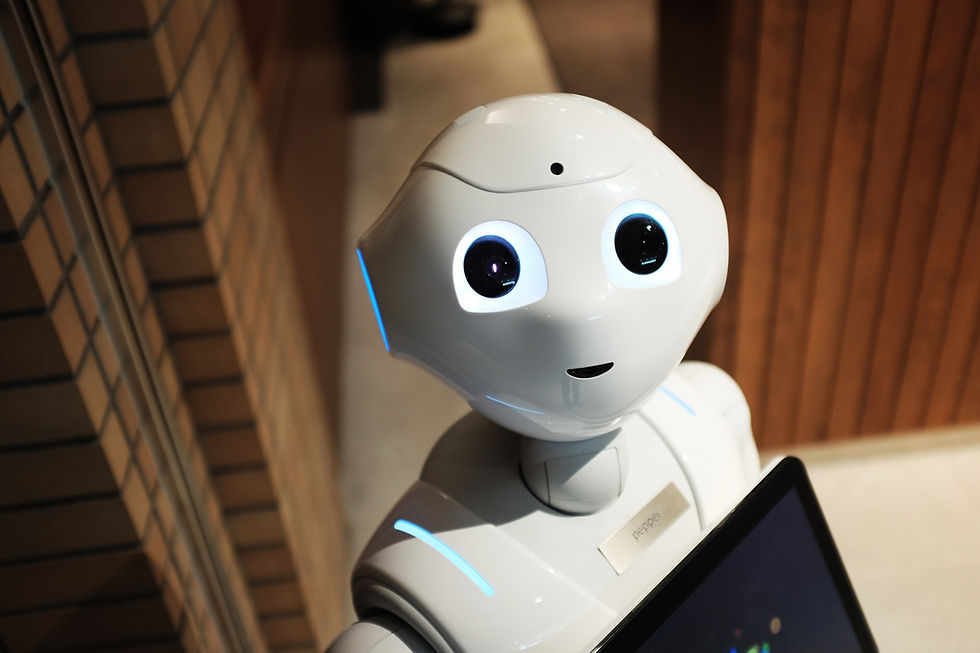How Much Do You Really Know About the Surprising Truth Behind Economic Growth?
- Boon Yao Tan
- Mar 28
- 4 min read

Economic growth is the talk of the town, the belle of the ball, and the star of the show in news articles, policy discussions, and even your aunt's dinner table debates. Everyone's got an opinion, but do we really know what fuels this economic engine? Today, we're pulling back the curtain on the surprising truths about economic growth that often get overshadowed by all the chatter. Let's break it down in a way that's both enlightening and entertaining.
What is Economic Growth?
Economic growth is like a country's version of a growth spurt, where the production of goods and services gets a boost over time, usually measured by the magical rise of the Gross Domestic Product (GDP). It's like a health check for a nation. When GDP goes up, it's like everyone gets a little bit taller—better living standards, more jobs, and a fatter wallet for all.
But let's not get lost in the numbers. Behind those stats are real people experiencing real changes in jobs, salaries, and the quality of their daily grind.
Why Understanding Economic Growth Matters
Grasping economic growth is more than just a brainy exercise. It’s like having a crystal ball for your paycheck, job prospects, and career adventures. In a booming economy, household incomes tend to rise. In the U.S., from 2010 to 2020, the median household income jumped by about 10%, showing how economic growth can make life a little more comfortable.
By understanding economic growth, you can make savvy choices as a consumer, employee, and citizen. Plus, you can learn how to be the superhero of your local economy with your personal and business decisions.
Key Factors Driving Economic Growth
Economists love to point out the usual suspects behind economic growth. But beyond the usual government policies and market trends, there are some sneaky factors that often go unnoticed.
Innovation and Technology
Innovation and technology are like the dynamic duo of economic growth. New gadgets and gizmos boost productivity. Industries that embrace automation tech have seen productivity soar by about 20%.
In the renewable energy world, innovations like solar power not only save the planet but also create jobs. In 2021, the solar industry alone added nearly 250,000 jobs in the U.S., showing how tech can drive growth while giving Mother Earth a high-five.
Education and Human Capital
Education is like the secret sauce for economic growth. Smarter workers mean more productivity. A study by the OECD found that each additional year of schooling can boost a person's earnings by about 10%.
Beyond the classroom, investing in vocational training and lifelong learning keeps the workforce on its toes, ready to adapt to the ever-changing tech and market demands.
Infrastructure Development
Infrastructure is the backbone of any economy, made up of roads, bridges, railways, and internet highways. Good infrastructure is like a magnet for trade and investments.
Take Michigan, for example. A $1.4 billion investment in road repairs is set to create around 17,000 jobs next year. It’ll not only smooth out your drive but also attract businesses looking for solid infrastructure, proving that infrastructure and economic activity go hand in hand.
Political Stability
Politics can surprisingly sway economic growth. Stable governments are like catnip for foreign investments because businesses love predictability.
Countries like Singapore, known for their stable politics and clear rules, have enjoyed GDP growth rates of over 3% annually. On the flip side, countries caught in political whirlwinds often struggle with sluggish growth, highlighting the importance of a steady hand at the helm.
The Impact of Globalization
Globalization is the jetsetter of economic growth, enabling the global exchange of goods, services, and ideas. This interconnectedness can streamline efficiencies and open up wider markets.
But globalization isn’t all sunshine and rainbows. Relying on foreign markets can make economies vulnerable. During the pandemic, many supply chains hit a snag, revealing just how delicate global ties can be. Balancing globalization with local economies is key to understanding economic growth.
What Happens When Growth Slows?
While growth is usually the life of the party, slowdowns can be a real buzzkill. When economic growth hits the brakes, unemployment often spikes as businesses tighten their belts or shut down. This creates a vicious cycle where consumer spending takes a nosedive, further bruising the economy.
During the 2008 financial crisis, the U.S. saw unemployment soar over 10%. Governments often whip out fiscal magic tricks, like stimulus packages, to jumpstart growth, though results can vary.
Being clued in to signs of stagnation lets folks and businesses brace themselves for economic rough patches.
The Road Ahead for Economic Growth
The quest for sustainable and inclusive economic growth is gaining traction. With challenges like climate change and social inequality on the rise, there’s a shift towards growth models that care for both the planet and people.
Investments in green tech and sustainable practices can spark new job opportunities. The global renewable energy sector is expected to draw in $7 trillion in investments by 2030, showing the potential for growth that’s also kind to the Earth.
Wrapping It Up
Understanding economic growth gives you the power to join informed debates, make smarter personal choices, and champion important policies in your community.
From innovation to education, infrastructure, political stability, and globalization, every piece of the puzzle plays a crucial role in the grand economic picture. Next time economic growth pops up in conversation, you can dive in with confidence, knowing it’s a key player in shaping our lives.
As we navigate the tangled web of the economy, it’s clear that understanding economic growth isn’t just about numbers—it’s about real people, opportunities, and the future we build together.



Comments